Since the start of the new coronavirus crisis, 3D printing has become a real phenomenon, and everyone is talking about its effectiveness. From the manufacture of visors and test tubes to valves for respirators, professionals and private individuals alike have become even more involved in 3D printing of healthcare equipment. Since the start of COVID-19, we’ve been seeing innovations in the medical field thanks to 3D printing. For example, the 100-times reusable mask, which (once acquired for just €28) means you can continue to use it simply by buying new filters. In these troubled times, many companies are putting their know-how at the service of the common good, and some are even sharing their 3D printing processes. What about industrial property?
Patenting a 3D-printed product
All the issues surrounding industrial property also apply to 3D printing. This additive manufacturing process is accessible to all. The ease of production and reproduction increases the risk of counterfeiting. This is an issue to be taken into account if you are developing an innovative process.
To protect your innovations, even when 3D printed, apply for a patent! Because, even if 3D printing is simple, fun and accessible (both materially and financially), you mustn’t put aside questions of industrial property. Did you know, for example, that even in open source there is the notion of intellectual property rights? Contrary to what you might think, obtaining a patent does not simply mean benefiting from a monopoly of exploitation, prohibiting anyone else from exploiting the innovation and protecting yourself from potential counterfeiting. It also gives you control, for example, by granting free or paid operating licenses.
And the Soleau envelope?
Quick to file and obtain, and inexpensive, theSoleau envelope allows you to time-stamp your work and benefit from anteriority. This enables you to prove your prior personal possession. You can put the design of a 3D-printed object, for example, in an e-Soleau. Consult an Industrial Property Attorney to define the elements to be time-stamped.
For more information on the difference between a Soleau envelope and a patent, read our article!
3D printing: what you can protect
“Intellectual property laws regarding hardware (the 3D printers themselves) in the 3D industry are sufficiently developed”. That’s what a majority of people from a variety of industrial sectors think, according to a survey conducted by the European Commission.
So why not protect your innovation as you would in other fields? It is possible to protect several elements linked to 3D printing:
- Innovations related to the software used, for example, to operate 3D printing machines.
- The design data for your innovation, i.e. the models that enable you to print your products. Any design can be protected if it is new and distinctive.
- Inventions related to the equipment used (3D printers or scanning machines) and consumables.
This protection could be extended to CAD (Computer-Aided Design) files, which include software and all the techniques used to design models. When protecting your innovations, you can choose to license them in exchange for remuneration, or to use the free license system (for example, to be able to control who you license your patent to).
Where 3D printing was used to combat the spread of the COVID-19 epidemic
3D-printed valves in Italy transform Decathlon diving masks into breathing masks
The Italian company Isinnova has developed a valve model to transform a Decathlon diving mask into a respiratory mask, thus alleviating the shortage of respirators. 3D printing enabled the models to be adjusted to the needs of the establishments and production to be adapted rapidly. The valve has been patented to prevent commercial speculation. However, the patent remains free for use by any hospital requiring it. Healthcare establishments can therefore purchase the mask through Décathlon, and have the “link” part 3D printed to connect the respirators of patients in intensive care. Isinnova gives free access to its plans and drawings, on the condition that they are not used for commercial purposes (subject to a contract in which the person using the plans undertakes not to monetize the object and to respect certain clauses).
Did you know that it only takes a few mistakes to make an invention unpatentable? Between disclosure and lack of research, we’ve devoted an article to the subject: 3 stupid mistakes that make an invention unpatentable.
3D-printed visors for those most at risk
A royalty-free visor model was used to manufacture 3D visor hoops. Once the hoop is printed, an A4 translucent plastic sheet is attached. These visors are printed and distributed to establishments throughout France.
Whether you’re an individual or a professional, every contribution counts in the fight against the spread of COVID-19, and in helping caregivers. To find out how you can help, visit the APHP website.
